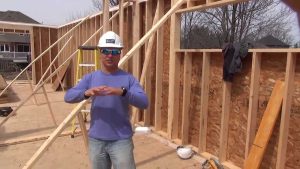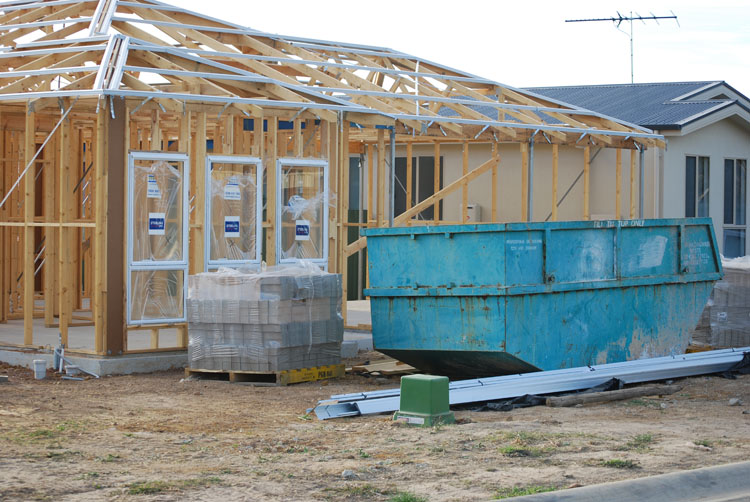What to Do First When Building a House
Planning Stage
Building a house is an exciting and significant milestone in anyone’s life. However, it can also be a complex and time-consuming process. To ensure a smooth construction journey, it is crucial to start with a solid plan. Here are some essential steps to take during the planning stage:
1. Define Your Needs and Budget
Before embarking on the house-building process, it is important to clearly define your needs and budget. Consider the size of your family, your lifestyle, and any specific requirements you may have. Determine the number of rooms, bathrooms, and other spaces that will accommodate your needs. Additionally, establish a realistic budget that covers the cost of construction, materials, permits, and unforeseen expenses.
2. Choose the Right Location
Location plays a significant role in the enjoyment and value of your future home. Research various neighborhoods, considering factors such as proximity to schools, workplaces, amenities, and transportation. Additionally, evaluate the availability of utilities and assess the overall safety and desirability of the area. Once you have found a suitable location, consult with local authorities to ensure your plans comply with zoning regulations and building codes.
3. Hire an Architect or Designer
Collaborating with an experienced architect or designer is essential to turn your vision into a reality. These professionals will help you create a functional and aesthetically pleasing design that suits your needs and budget. Work closely with them to develop detailed blueprints, including floor plans, elevation drawings, and specifications for materials and finishes.
Pre-construction Stage
After completing the planning stage, it’s time to move on to the pre-construction phase. This phase involves several critical tasks to prepare for the actual construction process:
1. Obtain Permits and Approvals
Before breaking ground, you need to obtain the necessary permits and approvals from the local authorities. This ensures that your construction plans comply with building codes and regulations. The permits required may include building permits, electrical permits, plumbing permits, and more. Engage with the relevant departments early in the process to understand the requirements and complete the necessary paperwork.

2. Select a Reliable Contractor
The success of your house-building project largely depends on hiring a reputable and skilled contractor. Research and interview multiple contractors, checking their credentials, portfolio, and client reviews. Request detailed cost estimates and timelines from each candidate and compare them carefully. Choose a contractor who not only fits your budget but also aligns with your vision and communication style.
3. Secure Financing
Unless you have enough savings to fund the construction entirely, you will likely need to secure financing. Meet with multiple lenders to explore your mortgage options. Compare interest rates, loan terms, and repayment plans to find the most suitable arrangement for your financial situation. It’s important to have a clear understanding of the loan process and to provide all the necessary documentation to expedite the approval process.
Construction Stage
Once you have completed the pre-construction tasks, it’s time to begin the exciting construction stage of your house-building journey:
1. Site Preparation and Foundation
The first step in the construction stage involves preparing the site and laying the foundation. Clear the land, level the ground.
2. Framing and Structural Work
Once the foundation is in place, the next step is to start the framing and structural work. This includes erecting the walls, installing the roof, and constructing the basic skeleton of the house. Skilled carpenters and construction workers will take precise measurements and follow architectural plans to ensure that the structure is sturdy and meets safety standards. This phase also involves the installation of doors, windows, and exterior finishes.
3. Plumbing, Electrical, and HVAC
With the basic structure complete, it’s time to focus on the inner workings of your home. Plumbing, electrical, and HVAC (heating, ventilation, and air conditioning) systems need to be installed at this stage. Experienced plumbers will lay pipes for water supply and drainage, while electricians will wire the entire house for electricity. HVAC technicians will install heating and cooling systems to ensure comfort throughout the year. It’s crucial to hire licensed professionals to ensure safety and compliance with building codes.
4. Insulation and Drywall
Insulation is essential for maintaining a comfortable and energy-efficient home. Insulation materials are installed within the walls, attic, and floors to regulate temperature and reduce energy consumption. Once insulation is complete, drywall installation begins. Drywall is used to create interior walls and ceilings. Skilled workers hang the drywall, apply joint compound, and sand the surfaces to create a smooth finish. This stage prepares the house for painting and interior finishes.

5. Interior Finishes
The interior finishes give your house its unique style and personality. This includes painting the walls, installing flooring, and adding decorative elements. Choose paint colors that reflect your taste and create the ambiance you desire. Consider various flooring options such as hardwood, tiles, or carpet, based on your preferences and lifestyle. Install kitchen cabinets, bathroom fixtures, and other built-in elements. This stage also involves selecting and installing lighting fixtures and appliances. https://nazbuild.com.au/
6. Final Inspections and Finishing Touches
Before moving into your new home, it must undergo a series of inspections to ensure compliance with safety and quality standards. Building inspectors will examine the construction at various stages to check for any issues or deviations from the approved plans. Once all inspections pass, the final touches can be added. This includes cleaning the house, landscaping the surroundings, and performing any necessary touch-ups or adjustments. You can also start organizing your furniture and personal belongings in preparation for the move.
Conclusion
Building a house is a complex process that requires careful planning and execution. By following the right steps, you can set a strong foundation for a successful project. Start by defining your needs and budget, choosing the right location, and working with professionals to design your dream home. During the pre-construction stage, obtain permits, select a reliable contractor, and secure financing. Once construction begins, focus on site preparation, framing, and the installation of essential systems. Complete the project by adding insulation, finishes, and conducting final inspections. With proper planning and attention to detail, you’ll be one step closer to enjoying your dream home.

